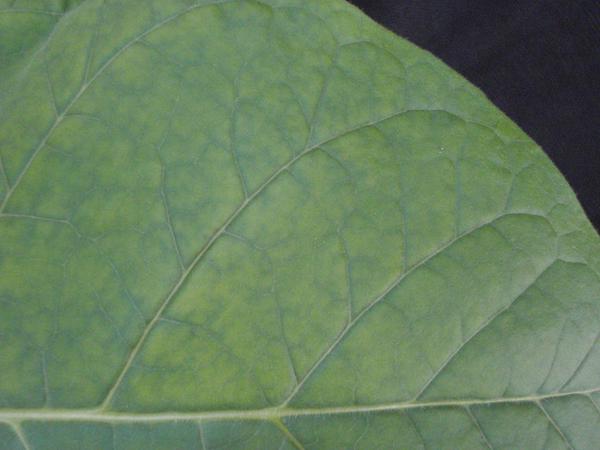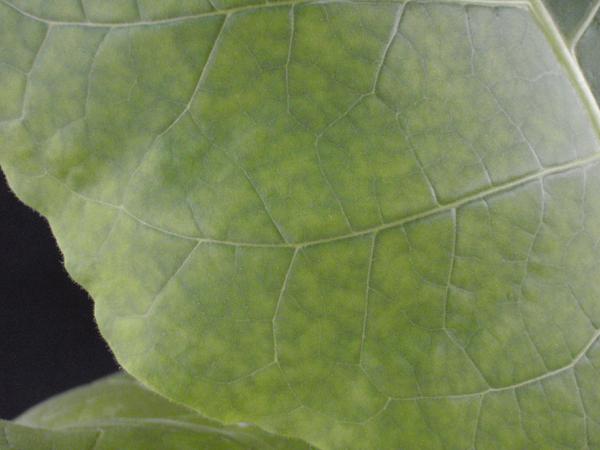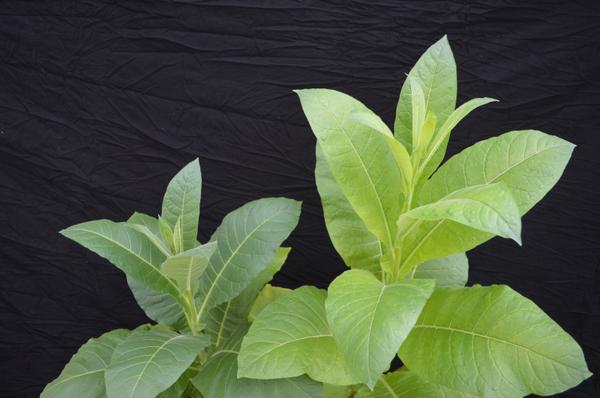Iron Deficiency
Iron (Fe) deficiency does not readily occur under field conditions. To better catalog this deficiency, we induced Fe stress under a controlled greenhouse study. In NC State University trials, interveinal chlorosis (yellowing) developed on the youngest leaves. Over time the chlorotic areas became more pronounced.
- Type
- Nutrition
- Leaf Location
- Younger
- Leaf Condition
- Marginal chlorosis, Interveinal chlorosis, Complete chlorosis
- Leaf Color
- Chlorosis (yellow), Bleached
Problem
Nutritional disorder – iron (Fe) deficiency.
Symptoms
Iron (Fe) deficiency does not readily occur under field conditions. To better catalog this deficiency, we induced Fe stress under a controlled greenhouse study.
In NC State University trials, interveinal chlorosis (yellowing) developed on the youngest leaves (Figure 1 and Figure 2). Over time the chlorotic areas became more pronounced.
(Descriptions based on the book, Hunger Signs of Crops, 3rd Edition, edited by H.B. Sprague.) Under controlled greenhouse conditions, tobacco plants are stunted when Fe is limited. The upper foliage of the plant develops an interveinal chlorosis, initially as a pale green, then progresses to a yellow and finally bleached appearance (Figure 1). The progression of the symptomology can help diagnose the problem as the symptoms will progress as the starvation of iron progresses. Advanced symptoms are viewable in Figure 3, with the plant on the right.
Similar Problems
Symptoms appear to be similar to when magnesium is limited, but magnesium deficiency symptoms develop on the lower leaves. The location of the yellowing and interveinal chlorosis can help diagnose between iron (top) and magnesium (lower). Submit a tissue sample for analysis to help diagnose the problem.
Additional Information
Iron is required is very low concentrations, so deficiencies under field conditions is unlikely.
Diagnostic Tips
The sufficiency range for iron is between 50 and 300 ppm for burley tobacco. A slight refinement of the range is available for flue-cured tobacco, with 50 and 300 ppm iron being recommended from planting until maturity, and a lower range of 40 to 200 ppm recommended at harvest for the upper, middle, and lower leaves.
Corrective Measures
Provide iron with your fertilization program.
Management
Provide iron with your fertilization program.
Funding Source
Funding was provided in part by the North Carolina Tobacco Foundation.
Project Team
Josh Henry (NC State M.S. student in Horticultural Science), Paul Cockson (NC State B.S. student in Agroecology), Ingram McCall (Research Technician in Horticultural Science), Rhonda Conlon (Extension IT at NC State), Matthew Vann (Tobacco Extension Specialist, Dept. of Crop and Soil Sciences), and Brian Whipker (Professor of Floriculture and Plant Nutrition in Horticultural Science).





